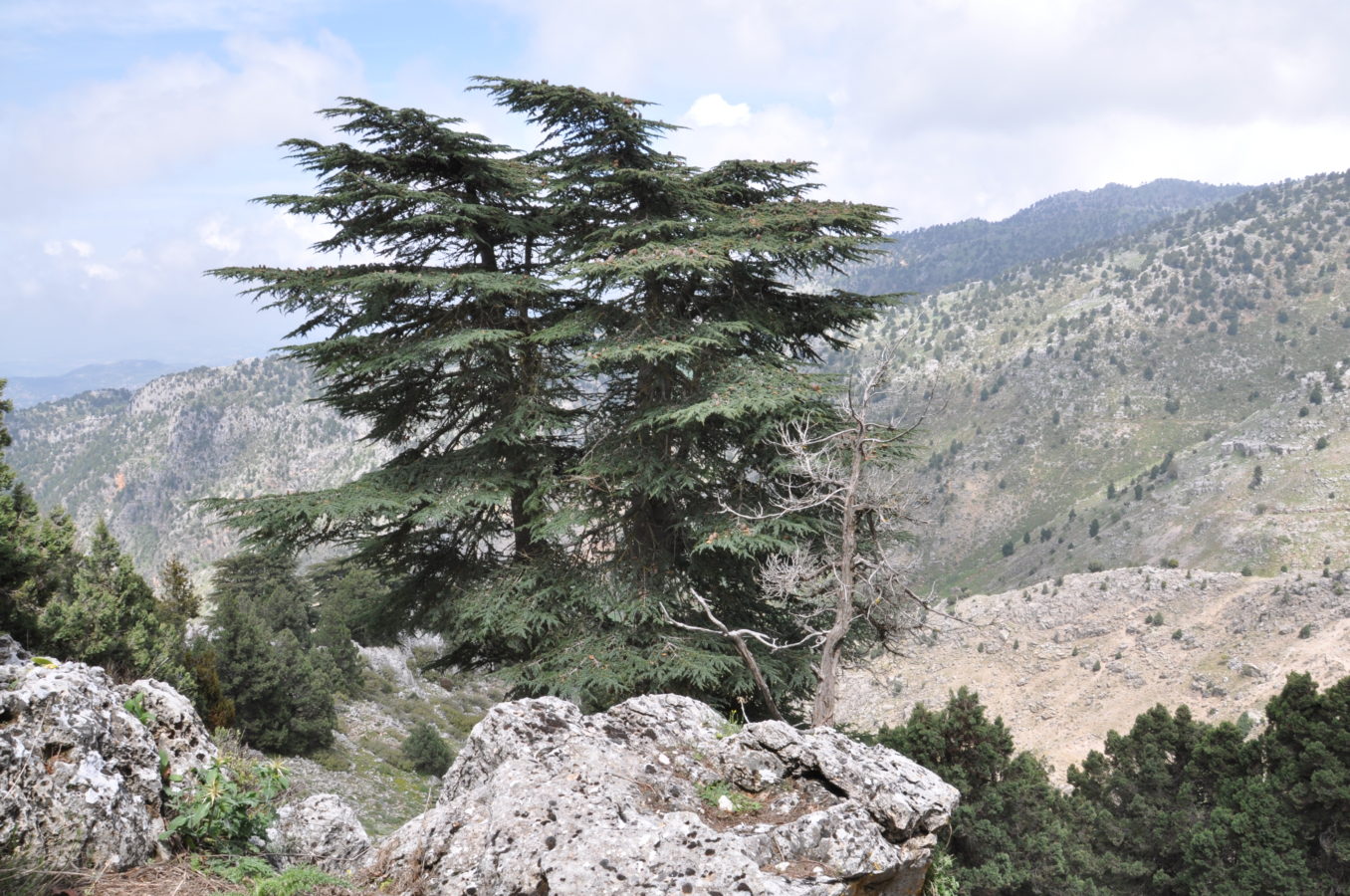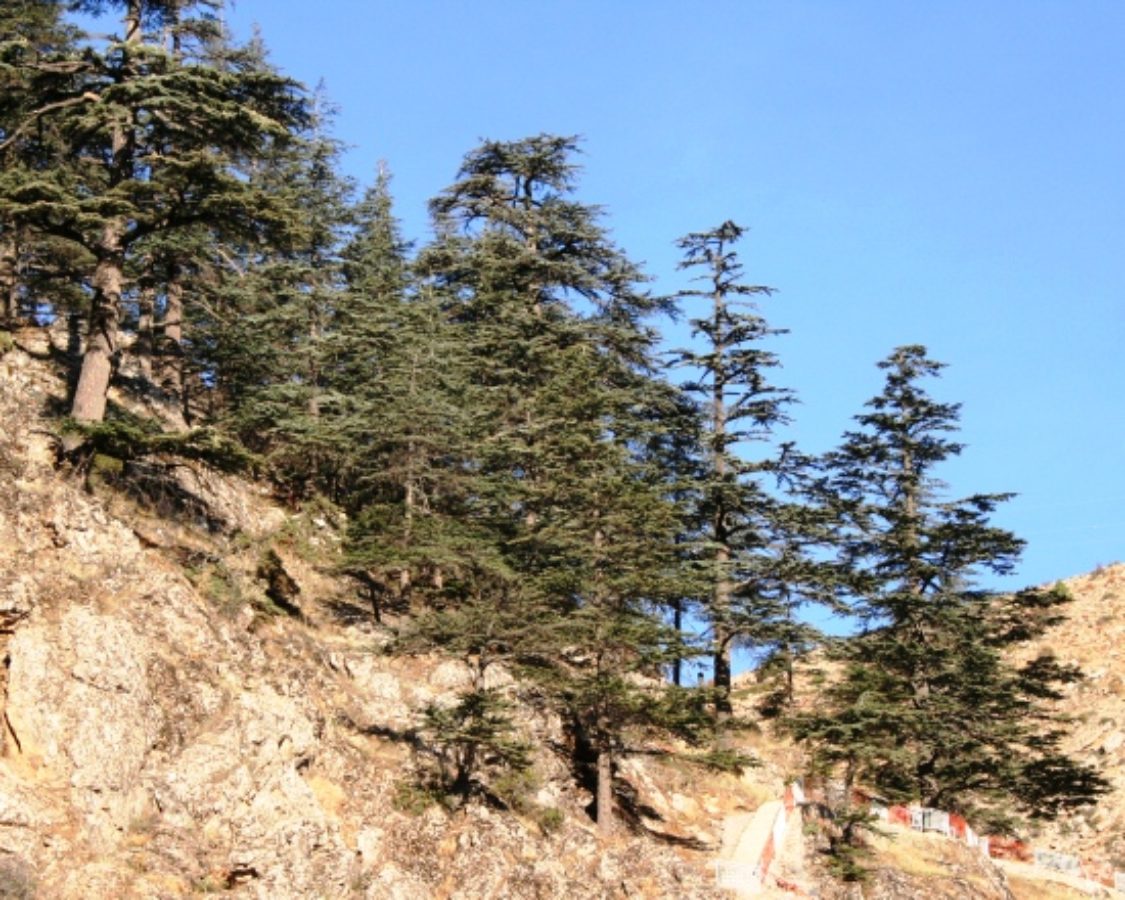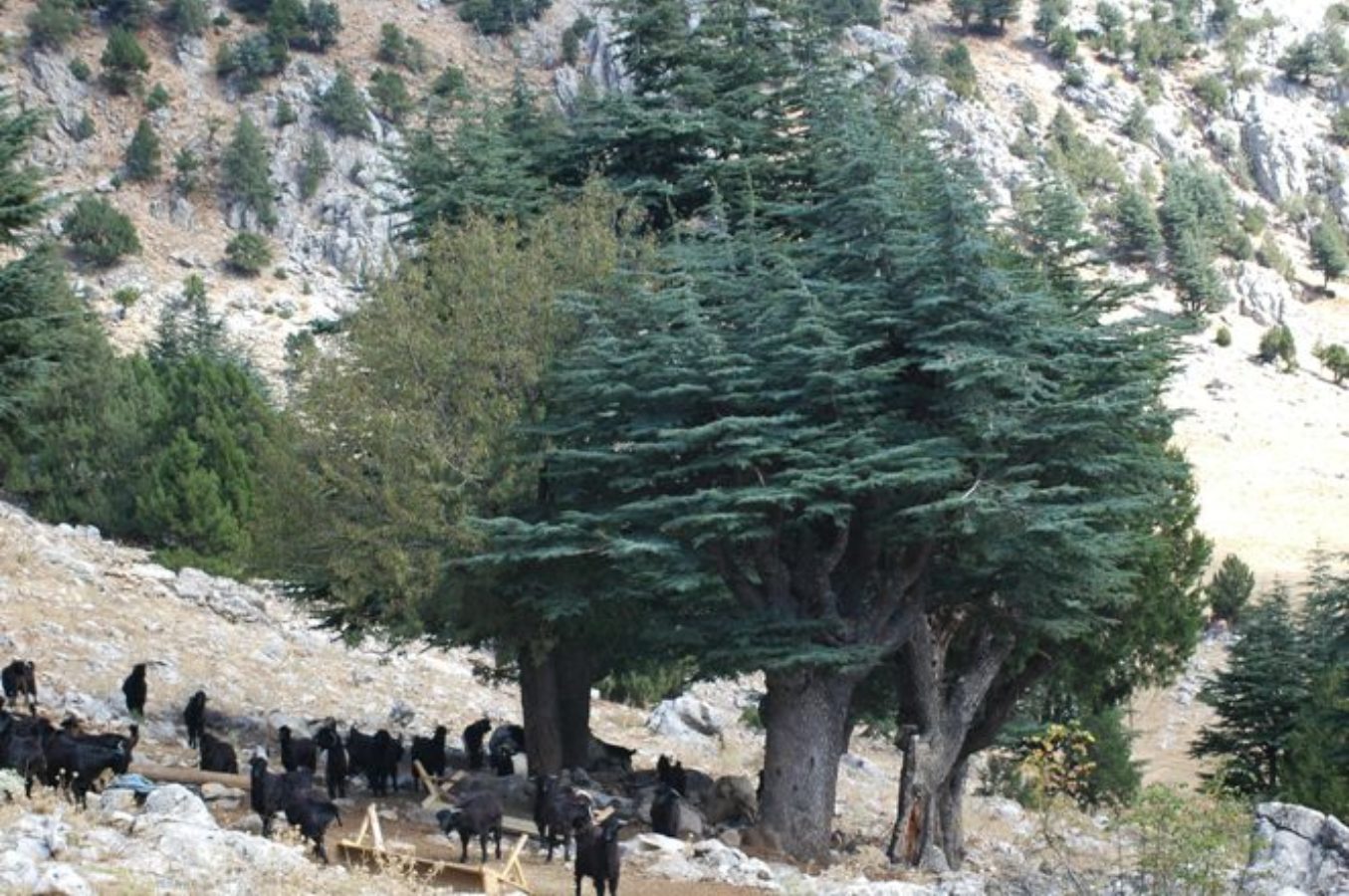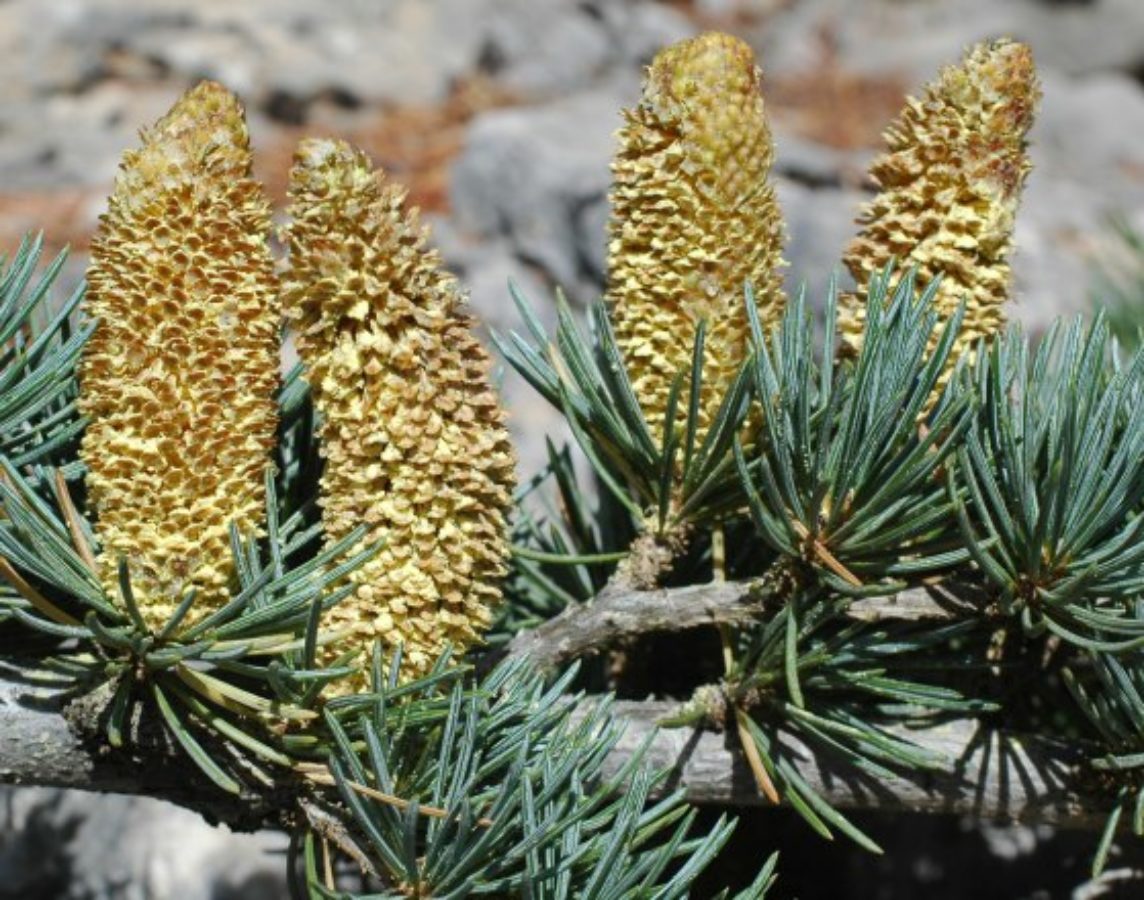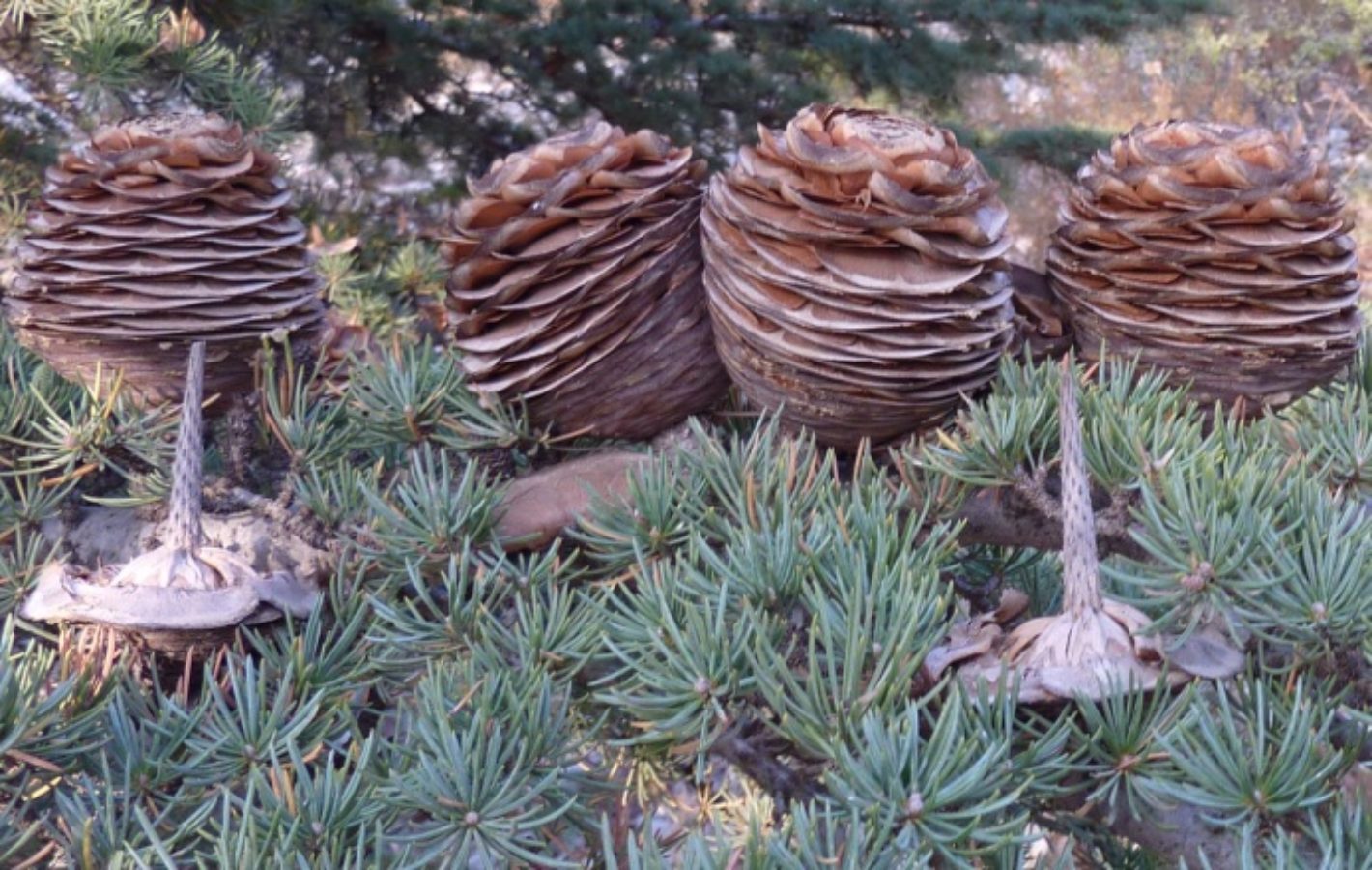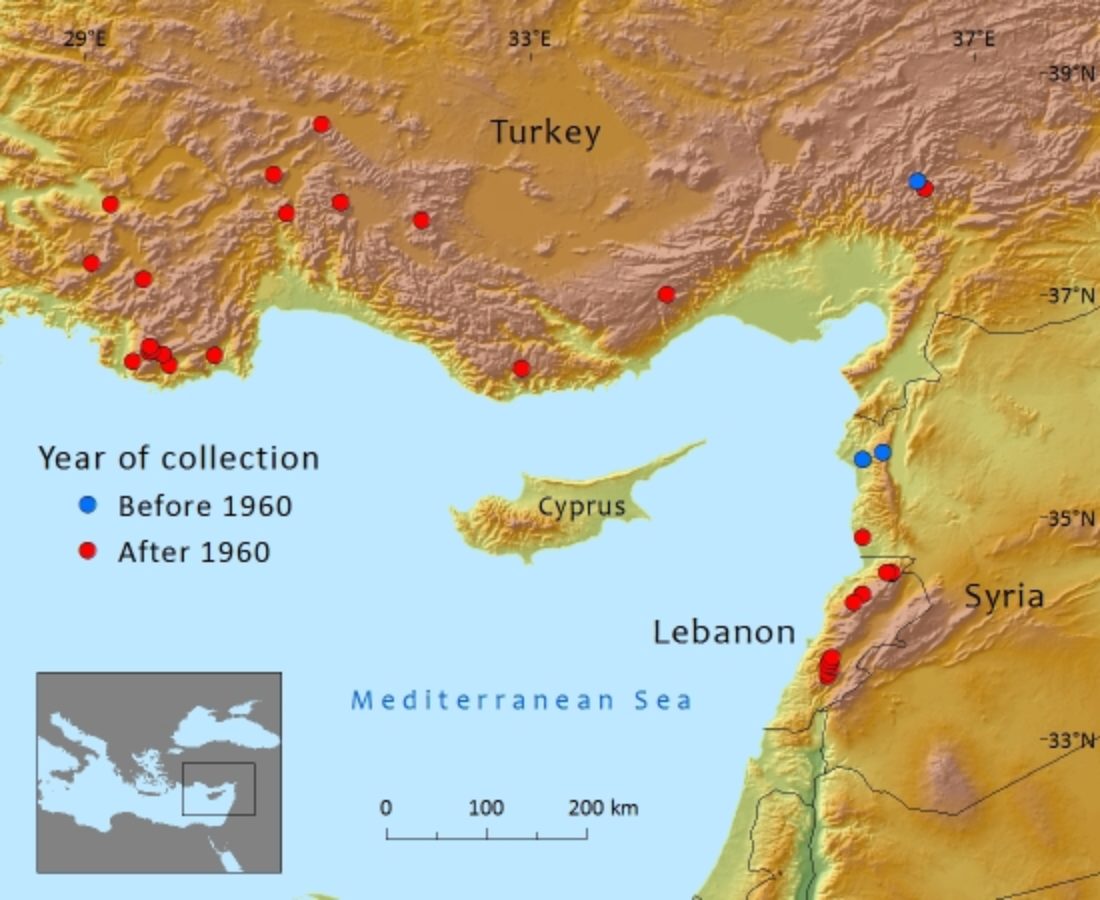Pinaceae
Cedrus libani
Native to mountains adjacent to the north-eastern Mediterranean coast in Turkey, Syria and Lebanon. Threats include pathogens, fire, urbanisation, selective felling, activities associated with winter sports and grazing.
Description
Habit
Tree 35–40m, d.b.h. 1.5–2.5m, trunk often forked or branched below. Bark cracked and scaly, with small flaking plates and deep fissures, gark grey to blackish; branches erect, spreading into distinctive horizontal layers. Leading shoots and tips erect or spreading.
Foliage
Leaves on long shoots spirally arranged, radially spreading; short shoots emerging in leaf axils, leaves densely crowed in false whorls 20–35, straight, 20–25 x 1.5–2mm, green, grey-green ro sometimes glaucous.
Cones
Male pollen-cones terminal, borne on short shoots, erect, 4–5cm long, cylindrical, curved pale broiwn when mature. Female seed-cones 8–12 x 3–6cm, terminal, borne on short shoots, erect, sessile, taking two years to mature when they become woody, ovoid oblong or barrel-shaped, ripening grey-brown. Seeds 10–14 x 4–6mm, winged, brown.
Key characters
In cultivation this species can be confused with C. atlantica (natural ranges do not ovelap), which differs by having smaller seed–cones that are only up to 8cm long and the male pollen-cones are shorter, up to 4cm.
Human Uses
Historically, the timber was been much used for shipbuilding and for the construction of temples. In Lebanon there is a limited amount of exploitation through the demand for ornaments made from cedar wood (Khuri & Talhouk, 1999) in spite of the protection that these forests are afforded.
References and further reading
- Beals E.W. (1965). The remnant cedar forests of Lebanon. Journal of Ecology 53: 679–694.
- Boydak, M. (1996). Ecology and Silviculture of Cedar of Lebanon (Cedrus libani A.Rich.) and Conservation of its Natural Forests. Orman Bakanligi Yayin, Istanbul
- Chaney, W.R. & Basbous, M. (1978). The Cedars of Lebanon, witnesses of history. Economic Botany. 32: 119-123.
- Kavgacıa, A.; Baarana, S. & Baaran, M.A. (2010). Cedar forest communities in Western Antalya (Taurus Mountains, Turkey). Plant Biosystems. 144(2): 271-287.
- Gardner, M. (2013). Cedrus libani var. libani. In: IUCN 2013. IUCN Red List of Threatened Species. Version 2013.1. <www.iucnredlist.org>. Downloaded on 08 July 2013.
- Khouzami, M. (1994). The Lebanese cedar forests. First National Conference on the Cedar of Lebanon, Present and Future. American University of Beirut, Lebanon.
- Khuri, S. Shmoury, M.R. Baalbaki, R. Maunder, M. & Talhouk, S.N. (2000). Conservation of the Cedrus libani populations in Lebanon: history, current status and experimental application of somatic embryogenesis. Biodiversity and Conservation 9: 1261–1273.
- Khuri, S. & Talhouk, S.N. (1999). Cedar of Lebanon (Cedrus libani A.Rich.). In: Farjon,A. & Page,C.N. (compilers). (1999). Conifers. Status Survey and Conservation Action Plan. IUCN/SSC Conifer Specialist Group. IUCN
- Musselman L.J. (1999). Surprising cedars of Syria. Plant Talk. 17: 19-21.
- WWF and IUCN. (1994). Centres of plant diversity. A guide and strategy for their conservation. IUCN Publications Unit, Cambridge, UK.
